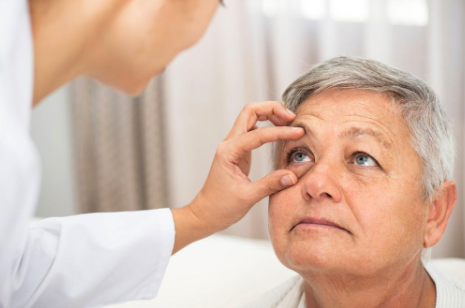Macular Degeneration: Protecting Your Vision as You Age

As we age, our bodies undergo various changes, and our eyes are no exception. While it's normal to experience slight vision loss or an increase in floaters when we get older, these symptoms can indicate a more serious eye condition called macular degeneration. Age-related macular degeneration (AMD) is common in older adults and occurs when the central part of the retina (the macula) becomes damaged and wears down. If left untreated, AMD can lead to vision loss, but there are promising and proven therapies to help patients manage this eye disease.
Understanding Macular Degeneration
There are two types of AMD: dry and wet.
Dry AMD
Dry AMD is the most common type of macular degeneration. Dry AMD occurs in three stages: early, intermediate, and late. Early dry AMD often goes unnoticed. Patients with intermediate AMD may experience some symptoms, like mild blurriness or difficulty seeing in low lighting. In late AMD, many people notice that straight lines start to look wavy or crooked. They may also notice a blurry area near the center of their vision. Typically, AMD progresses slowly over several years.
Wet AMD
Wet AMD is less common but usually causes faster vision loss. Any stage of dry AMD can progress to wet AMD, which is always considered late-stage. This condition occurs when abnormal blood vessels grow in the back of the eye, damaging the macula. The most common symptom of wet AMD is straight lines looking wavy.
Macular Degeneration Risk Factors and Prevention Tips
The risk of developing AMD increases with age, especially for individuals with a family history of the disease or those who smoke. It's important to note that early and intermediate AMD often do not present noticeable or significant symptoms. While AMD cannot always be prevented, an early diagnosis can lead to better vision outcomes. That’s why it’s important to maintain regular eye exams, especially if you’re over 55.
Diagnosing, Monitoring, and Treating Macular Degeneration
A retina specialist can diagnose AMD during a comprehensive dilated eye exam. They may also perform a test called optical coherence tomography (OCT). During the OCT test, a special machine is used to take pictures of the inside of the eye.
Treatment for AMD depends on the stage and type. In the early stages, a retina specialist can monitor the condition through regular eye exams. Maintaining a healthy diet and exercising regularly can also be beneficial. For those with intermediate AMD, special dietary supplements may help prevent further progression. In cases of wet AMD, doctors may administer anti-VEGF injections into the eye or use photodynamic therapy (PDT), which combines injections with laser treatment.
Take Steps to Protect Your Retinal Health
AMD is a serious eye condition that can lead to permanent vision loss. Individuals at risk of developing AMD should focus on maintaining a healthy diet, engaging in regular exercise, quitting smoking if necessary, and scheduling routine eye exams with a retina specialist. The earlier AMD is diagnosed, the better the chances of preserving vision for years to come.


